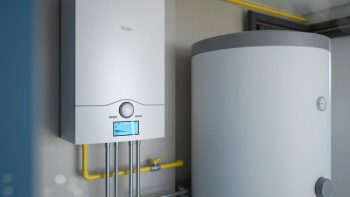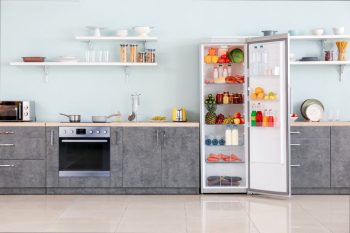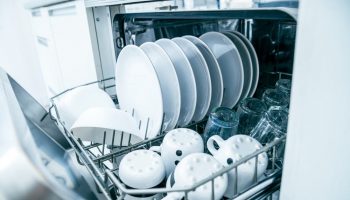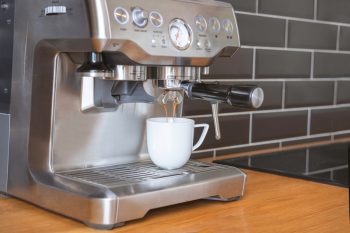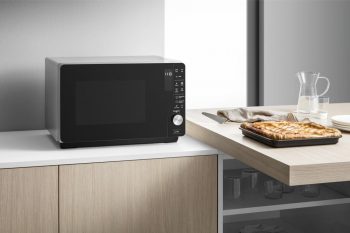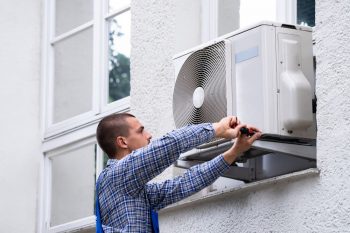
When you’re on the hunt for the perfect espresso machine, there are several factors to consider to ensure you choose the right one. From the type of machine to its size and design, the quality of the grinder, and the importance of maintenance, here’s an in-depth guide to help you understand what to look for in an espresso machine.
When looking for an espresso machine, consider the type of machine (semi-automatic, automatic, or super-automatic), the presence of a PID temperature controller, the pressure pump system, and the quality of the grinder. Additionally, consider the maintenance and cleaning requirements, the size and design of the machine, and any additional features like a milk frother or programmable settings. Your choice will depend on your personal preferences, budget, and how much control you want over the brewing process.
Types of Espresso Machines
There are primarily three types of espresso machines: semi-automatic, automatic, and super-automatic.
- Semi-automatic machines offer more control over the brewing process, allowing you to adjust the grind size, water temperature, and pressure.
- Automatic machines automate some parts of the brewing process, like water volume and extraction time.
- Super-automatic machines take convenience to another level by automating almost every aspect of the brewing process, including grinding, tamping, and extraction.
The choice between these depends on your level of expertise and how much control you want over the brewing process.
PID Temperature Control
The PID (Proportional-Integral-Derivative) temperature controller is a significant feature in espresso machines. It ensures consistent water temperature, crucial for extracting the best flavor from your coffee. The ideal temperature range for brewing espresso is between 194 and 201 degrees Fahrenheit.
Pressure and Water Flow
The pressure pump system should ideally have at least 9 bars to ensure proper extraction. The relationship between pressure and water flow is significant in espresso extraction. Pressure affects the flow rate, and by controlling the flow rate of water during pre-infusion and extraction, you can refine the nuances of your coffee and achieve better extraction.
Grinder Quality
The quality of a grinder significantly affects the taste of espresso. High-quality grinders ensure consistent grind size and minimize heat generation, leading to a better extraction process and a more flavorful espresso. Some espresso machines come with built-in grinders for convenience, but you may also consider investing in a separate, high-quality grinder for better control over your coffee grind.
Maintenance and Cleaning
Proper maintenance and cleaning of an espresso machine are essential for its longevity and performance. Regular cleaning helps prevent the buildup of coffee oils, mineral scale, and other residues that can affect the taste of your coffee and the functioning of the machine.
Size and Design
The size and design of an espresso machine can impact its functionality and suitability for different kitchen spaces. Compact and ergonomic designs can improve workflow and fit better in smaller spaces, while customization options can enhance branding and customer experience.
Additional Features
Additional features like a milk frother for cappuccinos and lattes, programmable settings, and a double boiler can add value to an espresso machine. These features can enhance your espresso-making experience and provide more convenience and versatility.
In summary, the best espresso machine for you will depend on your personal preferences, budget, and the level of control you want over the brewing process. Take the time to research and compare different models, understand the importance of each feature, and consider your kitchen space and usage needs to find the perfect machine to brew your perfect cup of espresso.
Frequently Asked Questions
What is the ideal pressure for an espresso machine?
The ideal pressure for an espresso machine is generally 9 bars. This provides the best extraction, allowing you to get the most flavor from your coffee.
How often should I clean my espresso machine?
It’s recommended to clean your espresso machine after every use to prevent the buildup of coffee oils and other residues. However, a deep cleaning should be done every 3-6 months, depending on the frequency of use.
What is the importance of having a good grinder for an espresso machine?
A good grinder is crucial for making espresso because it ensures consistent grind size, which is key for proper extraction. A high-quality grinder also minimizes heat generation during the grinding process, which can adversely affect the flavor of the coffee.
Do I need a milk frother for my espresso machine?
A milk frother is not necessary for making espresso, but it is a useful feature if you enjoy drinks like cappuccinos and lattes. It allows you to froth milk to the desired consistency, adding a creamy texture to your beverages.
What is a PID temperature controller in an espresso machine?
PID stands for Proportional-Integral-Derivative. It’s a type of temperature controller used in espresso machines to ensure consistent water temperature, which is crucial for extracting the best flavor from your coffee. The ideal temperature range for brewing espresso is between 194 and 201 degrees Fahrenheit.



